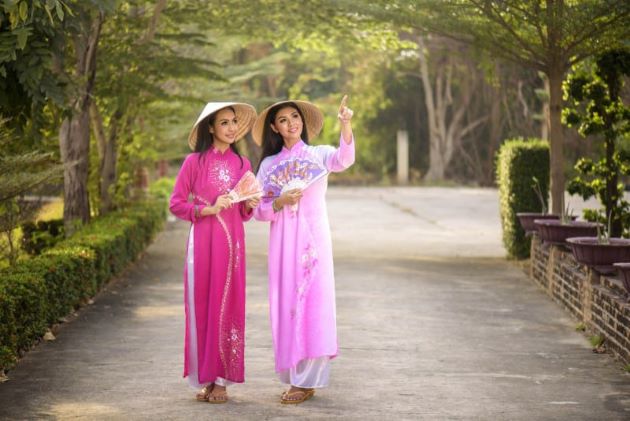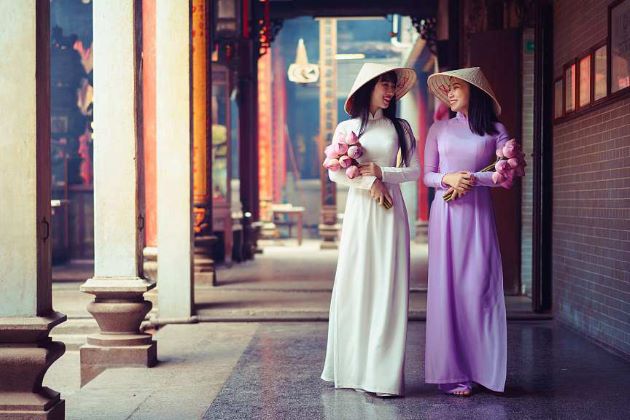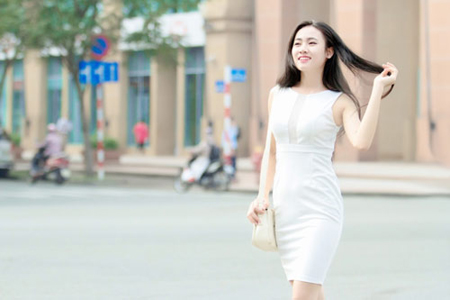With regard to what is considered the "appropriate" way of dressing in Vietnam, it is worth taking a closer look at the Vietnamese traditional dress, the ao dai. Although nowadays it's only worn by students at certain schools and during important occasions or at smarter evening parties, it gives a good indication of what is generally 'done' and 'not done' in terms of dress.

The first thing you'll notice is that the top is worn very tight and that it shows off the figure very well. Indeed, in contrast with many other countries where a woman's body must be hidden by reams of material or flowing garments that suggest nothing at all, close-fitting clothes are not a problem here. Moreover, especially when white, an ao dai gives a very good view of a young woman's underwear. It would seem that transparency does not necessarily go hand-in-hand with indecency!
However, with its long-sleeved top and trousers right down to the feet, this traditional costume covers a lot of traditionally shielded flesh. In short, clothes can be as tight and diaphanous as they come...You can never wear too much, but don't bare too much! So, DON'T hesitates to wear body-hugging little tops, tight trousers or skirts ... if you feel so inclined, of course! DO risk a little lace and some see-through stuff sometimes: don't be straight-laced about it! The Vietnamese are not.

DO avoid plunging necklines, bare shoulders, short skirts, shorts...Very little naked flesh is shown in this country. Even though this practice is very rapidly becoming more flexible, especially in the larger towns where young Vietnamese women are adopting more and more international fashions, it is definitely advisable to conform to tradition if you travel in rural areas, visit pagodas and temples, and if you are working in Vietnam.
DO show respect for local ways of thinking by adjusting the way you dress. Appearances are very important. Provocative attire and shabby, scruffy clothing are not recommended.

DO be advised that even though Vietnam is not a country where you risk being attacked for your immodesty, receiving reprimands, or enduring direct comments, people will definitely look askance all the same, and there will be no shortage of remarks being made behind your (bare?) back...especially because people will often assume that you don't speak the language. And in fact, you are often better off if you don't know what's being said!



